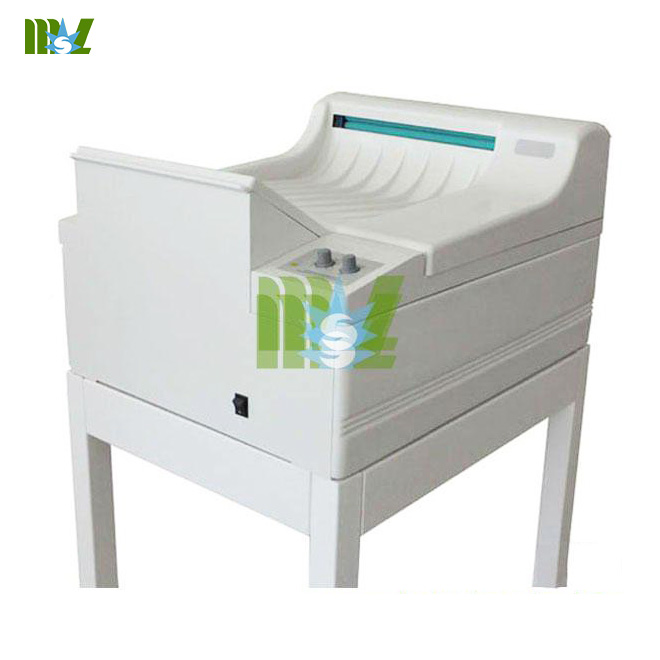You might heard about what is Bioceramics,howerver ,do you know bioceramics can be use for medical equipments. A bioceramic is a ceramic that can be implanted into a patient without causing a toxic response. Bioceramics can be classified into three categories; resorbable (e.g., tricalcium phosphate), bioactive (e.g., bioactive glass, hydroxyapatite), and nearly inert materials (e.g., alumina and zirconia) (5). A bioactive material is defined as a material that elicits a specific biological response at the interface of the material, which results in a formation of a bond between the tissue and that material (6). Bioceramics can be polycrystalline (alumina or hydroxyapatite), bioactive glass, bioactive glass–ceramic (apatite/ wollastonite, A/W), or used in bioactive composites such as polyethylene-hydroxyapatite.
This article begins with examples of successful bioceramics used clinically that improve the length and quality of life for patients. Developments of porous bioceramic and composite scaffolds for tissue engineering applications are then discussed. The article ends by discussing how bioactive ceramics may be the future of regenerative medicine due to their potential for guiding tissue regeneration by stimulating cells at the genetic level (Fig. 1).

NEARLY INERT BIOCERAMICS
High density, high purity a-alumina (Al2O3) was the first bioceramic widely used clinically, as the articulating surfaces of the ball and socket joints of total hip replacements because of its combination of low friction, high wear resistance, excellent corrosion resistance, good biocompatibility, and high strength (7). The physical properties of alumina depend on the grain size. Medical grade alumina exhibits an average grain size <4 mm, a compressive strength of 4.5 GPa and a Young’s modulus of 400 GPa (8). Other clinical applications of Al2O3 include bone screws, jaw and maxillofacial reconstructions, middle ear bone substitutions, and dental implants. Zirconia is a bioinert ceramic that has higher flexural strength and fracture toughness and a lower Young’s modulus than alumina. Zirconia may therefore be suitable for bearing surfaces in total hip prostheses, however, there are concerns over the wear rate and radioactivity of the material in the body (9).
When an almost inert implant is implanted into soft or hard tissue, a nonadherent fibrous capsule surrounds the implant. If the implant is loaded such that interfacial movement can occur, the fibrous capsule can become several hundred micrometers thick and cause loosening of the implant, which will eventually lead to clinical failure (8). An improved interface between nearly inert implants and tissue can be achieved by using an implant containing pores in excess of 100 mm in diameter. The fibrous connective (scar) tissue grows into these pores and anchors the implant in place. This technique is termed ‘‘biological fixation’’ (10). Viable bone requires pores of >200 mm. However, connective tissue still allows some movement of the prothesis, which will increase with age and cause bone resorption.
- Home
- Ultrasound
- Sonoscape ultrasound
- 4D ultrasound machine
- 3d Ultrasound Machine
- Wireless ultrasound
- Portable Ultrasound Machine
- Color Ultrasound Machine
- Bone Densitometer Machine
- Handheld Ultrasound
- Veterinary Ultrasound
- Trolly ultrasound machine
- Digital Ultrasound Machine
- Chison ultrasound
- Home Ultrasound Machine
- Mindray ultrasound
- Fetal Doppler
- Medical Printer
- Laboratory
- Automated blood analyzer
- Dry Chemistry Analyzers
- Biochemistry analyzer
- Veterinary blood analyzer
- Immunoassay analyzer
- Blood gas analyzer machine
- Urinalysis machine
- Rayto IVD
- Microplate readers
- Mindray analyzer
- Testing equipment
- Blood cell analyzer
- Portable blood analyzer
- Blood coagulation analyzer
- Blood pressure analyzer
- Handheld blood analyzer
- Radiology
- Surgery
- Veterinary
- Beauty
- ENT treatment
- Ophthalmology
- Contact




 Price is 8-20% Lower Than Other
Price is 8-20% Lower Than Other






